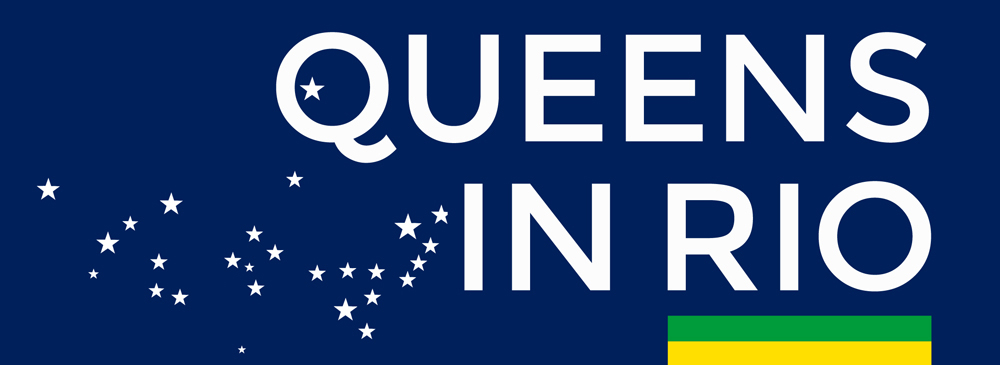Dion Dreesens and Patricia Castro-Ortega look like any other Queens students — you might see them eating in the cafeteria or studying in the library. But pay closer attention, and you would notice that they both have the same tattoo: the Olympic rings. Both swimmers competed in the London 2012 Olympic Games. Pay even more attention, and you would realize that although they practice together for hours each day in the same pool, one is Spanish and the other is Dutch. At Queens, they’re on the same team. In the Olympic Games, their teams compete against each other.
For Dion Dreesens of the Netherlands and Patricia Castro-Ortega of Spain, the shared goal of competing in the Olympic Games forged a friendship that goes beyond nationality. Thirteen swimmers from 10 countries, including the Netherlands, Spain, Ukraine, Argentina, and the United States, compete for Queens, which has won the national Division II swimming championship for the last two years.
Beyond their taste in tattoo art, Dion and Patricia have many common interests. They both came to the United States because, after competing in London, they believed that being a student-athlete in the United States presented a great opportunity.
After spending almost two years in the US, Patricia says she has found a family. Training for several hours together daily can create a strong bond, she says, and the swimmers she works with share the same passion and goals. Is it difficult for highly competitive athletes to maintain friendships, when they swim against each other in competition? Patricia says no. “I know that at the meet, I have to beat them. But during the process this is the best thing we can do — swim together and train together.”
The approach of American coaches is different than Spanish coaches, Patricia says. “In Spain, it feels more like a job. I am not saying they don’t like it, but here (in the USA) it’s a passion. They love what they do.” Coaching style is also different, including methods, techniques, and programs. Even though it takes time to adapt, Dion and Patricia agree that coaches with totally different strategies made them improve and taught them to view training from different perspectives.
Being a swimmer is difficult, Dion and Patricia say, but being a student-athlete is even harder. Having the support of other swimmers, even if they swim for another national team, is a key component of their support structure. “In practice, we improve ourselves and our teammates,” Dion says. “I would not be able to succeed without them and vice versa.” No matter the nationalities, they are friends outside the pool.

